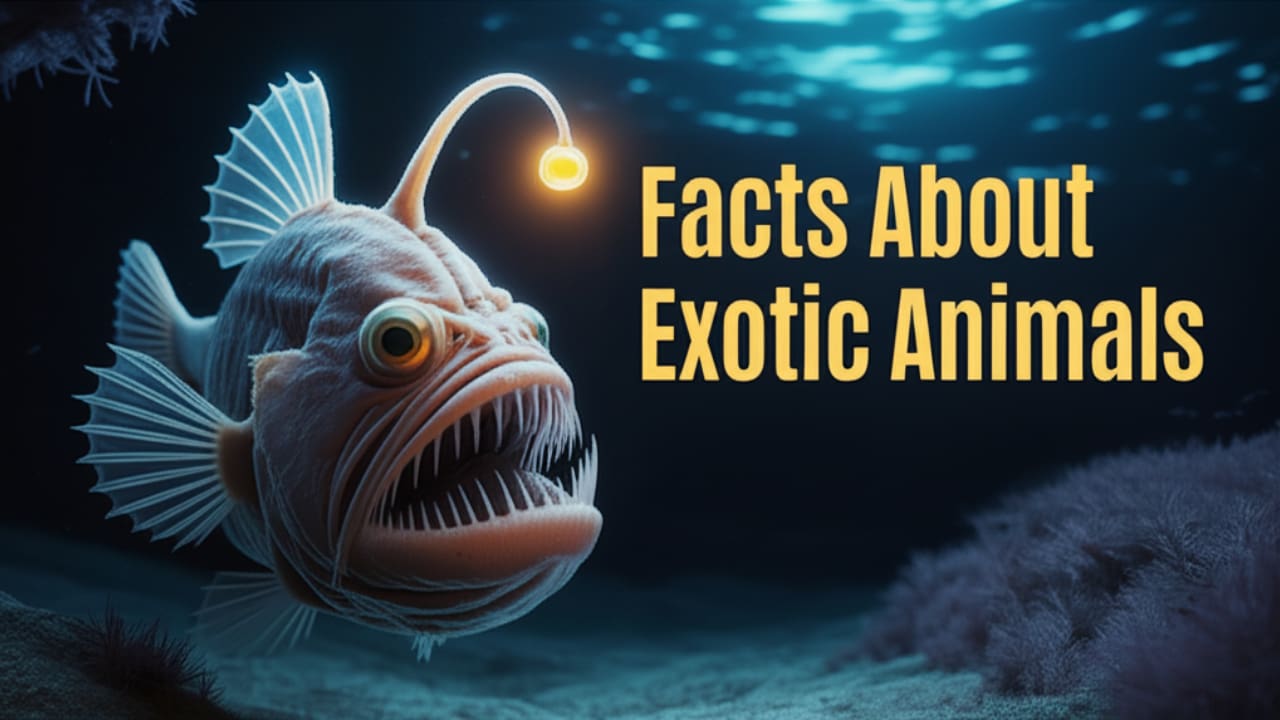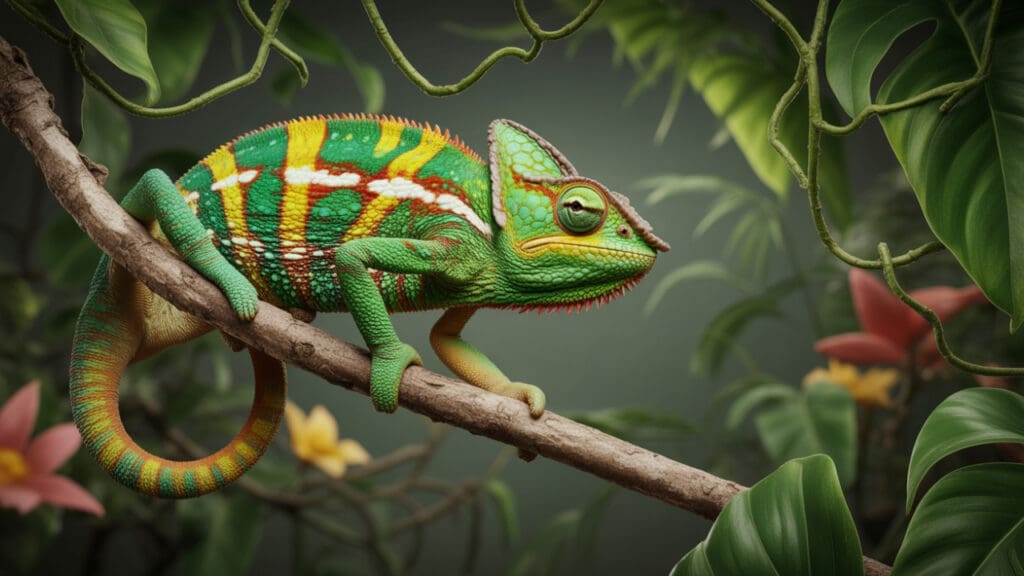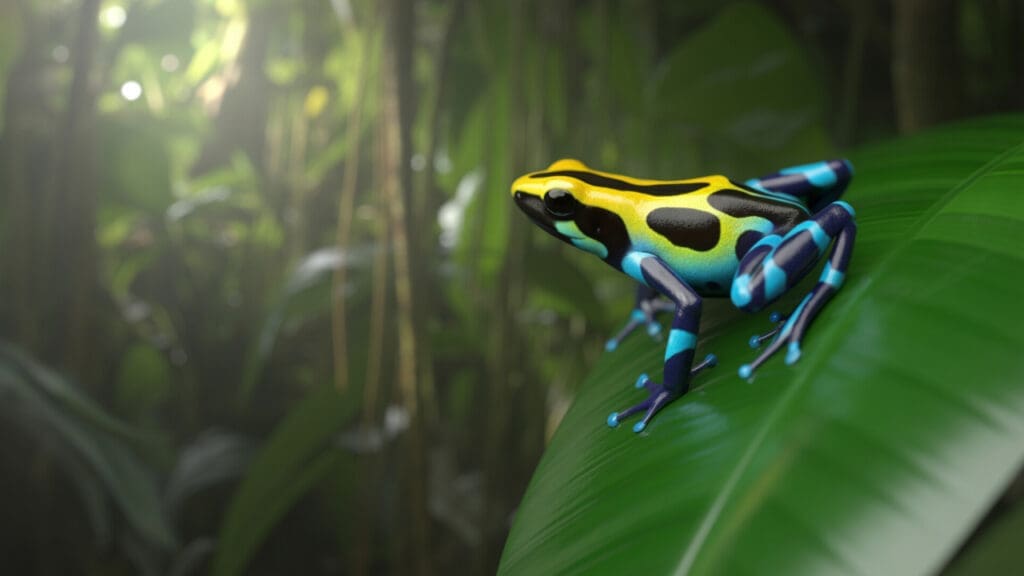
Newsletter Subscribe
Enter your email address below and subscribe to our newsletter

Enter your email address below and subscribe to our newsletter

You might have thought about owning a sugar glider, a small hedgehog, or perhaps even that axolotl you see on the internet. Exotic animals may seem fascinating. But most people do not realize the responsibilities and risks that come with them.
Some exotic pets need habitats that are climate-controlled. And these can cost over $500. Other pets, like parrots or tortoises, can live a long life. They may even outlive you by decades.
Exotic animals are not exactly low-maintenance. More often than not, you will need to engage in daily interaction with them. Most also require specialized diets. And you might even need a rare specialist to help you with veterinary care, and that can be quite expensive.
So, what makes an animal “exotic?” Which ones could actually make good pets? Let’s take a look at some interesting facts about exotic animals in this article.
You will get to know which exotic pets can thrive in certain lifestyles. Importantly, you will gain knowledge on how to avoid legal problems. Additionally, you’ll see why some species (like reptiles, for example) may carry hidden health risks that are not visible to the naked eye.

Before we dive in, let’s look at the real numbers behind exotic pet ownership in 2025:
Market Growth: The global exotic pets market was valued at $1.65 billion in 2024 and is projected to reach $1.75 billion in 2025, with a 7.3% growth rate.
Initial Setup Costs:
Annual Ongoing Costs:
Veterinary Care Reality:
Lifespan Commitment: A macaw purchased when you’re 25 may live 50-60 years (not 80+ as commonly claimed). Have you planned for that multi-generational commitment?
This data isn’t meant to scare you, but to prepare you for the reality of responsible ownership.

Now, you may think the word “exotic” just means “unusual.” But there’s a lot more to the definition. This word especially holds weight in the realm of legality and care requirements.
In very simple terms, an exotic animal is a species that is not native to the country or region in which it is kept. But it’s a lot more complicated than that, and not all governing bodies follow this definition.
In the United States, for example, the U.S. Fish and Wildlife Service and some state agencies have different ways of categorizing and/or defining exotic animals. A sugar glider might be considered an exotic pet in one state. But they can be banned in another state. However, federal law defines an exotic animal as one native to a foreign country or of foreign origin or character that is not native to the United States.
You could think of the term “exotic” as something encompassing certain qualities. These include origin, potential risk, environmental impact, and the complexity in terms of care.
Another thing to consider involves the facts about exotic animals as pets. Remember that each exotic animal is likely to need a very specific habitat and dietary needs. So, your experience with keeping a tarantula, for example, may not translate directly to axolotl care.
Don’t make the mistake of thinking that exotic means low-maintenance. Veterinary professionals warn that such a misunderstanding often leads to these pets suffering from stress and other health conditions. In some cases, your lack of knowledge could lead to legal issues, like the requirement of permits, routine inspections, or habitat certifications.
So, before buying an exotic pet, you should check your local regulations. Don’t just rely on pet store claims. Talk to a licensed exotic animal vet or a local wildlife authority. This step can save you from future headaches and provide you with insight as to how to take care of these animals.

We sat down with Dr. Sarah Mitchell, a board-certified specialist in avian and exotic medicine, to ask the questions you’re too afraid to ask:
Q: What’s the No 1 mistake you see new exotic owners make?
Dr. Mitchell: “Without a doubt, it’s improper temperature and humidity control. For reptiles, incorrect humidity leads to chronic, fatal respiratory infections and catastrophic shedding issues. People spend $300 on a tank but skip the $20 digital hygrometer. It’s literally a death sentence.”
Q: What’s a ‘green flag’ that someone is ready for an exotic pet?
Dr. Mitchell: “When they come to me before buying the animal with a detailed list of questions about enclosure specifications, UVB bulb brands, and local emergency vet availability. That shows genuine forethought and commitment to the animal’s welfare.”
Q: Is exotic pet insurance worth it?
Dr. Mitchell: “Absolutely. Companies like Nationwide now offer plans starting at $21/month for birds and reptiles. Given that a single emergency surgery can cost $2,500+, it’s one of the smartest financial decisions you can make.”
Q: How do costs compare to traditional pets?
Dr. Mitchell: “Exotic vets charge $75-$150 for basic exams versus $40 for dogs and cats. We require specialized training – many of us complete 2-4 year residencies beyond veterinary school. You’re paying for expertise that literally saves lives.”
Exotic animals are full of surprises and jaw-dropping traits. Some amphibians can glow in the dark. Some reptiles can live over a century. These animals break the mold of what we think pets can be.
Some exotic species even have abilities that seem like superpowers from science fiction. You have probably seen a video of an axolotl, for instance, regenerating their entire limbs. But do you know that they can also regenerate parts of their hearts and even segments of their brain? This is a fascinating focus in regenerative medicine research.
Some species of geckos have microscopic hair-like structures on their feet. And these allow them to walk up glass like superheroes clinging to skyscrapers.
That said, you probably shouldn’t just think of exotic animals as just “cool pets.” Many of these animals have nocturnal habits. Some may even have hidden health risks and can get stressed out easily in captivity.
Don’t mistake your exotic pets for another house cat or dog. Taking care of exotic animals is often ten times more specific. Your sugar glider, for example, may need a companion and a towering enclosure filled with climbing surfaces. They might become depressed or engage in self-harm otherwise.
Some exotic pets can live 50 years, sometimes even longer than that. Large parrots like Macaws and African Greys may live 30-80 years. Most tortoise species can live 80-150 years. What this means is that owning one can turn into a multi-generational commitment. And this can outlast most relationships, jobs, or even retirement plans.
The cost of taking care of these animals can surprise you, too. Exotic animals often require specialty foods and lighting systems. You will also need to factor in vet bills. So, if you’re a first-time buyer, remember to do your homework.
Taking care of an exotic animal is not the same as owning a cat or a dog. You’ll need to go in prepared to avoid turning everything into a stressful, expensive, or even illegal experience. Let’s explore the real facts about having exotic animals as pets and what you need to know before committing.
First, know that exotic pets often need specialized enclosures with strict temperature control. Most also require uncommon diets. And all these can drive up the costs fairly quickly.
Let’s take bearded dragons or iguanas, for example. A proper habitat that is complete with UVB lighting, thermometers, and heat lamps can easily cost over $500. And this does not include ongoing maintenance and the occasional and exotic vet care.
There are also legal responsibilities that come with these exotic pets. Know that state and local laws can vary quite drastically. And you may find yourself needing a permit or registration to legally own species like sugar gliders, capuchin monkeys, or certain birds. In some cases, you might even need to provide proof of training.
For legal guidance, do not just take the words of pet store employees or online sellers for it. Only your local wildlife or agricultural department can give you a definitive answer. Research the care requirements and regional laws before making any purchase decisions.
Do not underestimate the time commitment needed for taking care of these exotic animals. And certainly don’t overestimate the animal’s adaptability. A lot of exotic pets can become depressed, aggressive, or sick easily if you do not meet their environmental or social needs.
Sometimes, we just jump into owning exotic pets based on some inaccurate assumptions. And this can be potentially dangerous. Misconceptions about such pets can lead to legal trouble and medical emergencies. So, be careful as to what sources you take advice from.
One of the most common myths is that small exotic animals are “easy starter pets.” We’re talking about animals like hedgehogs or sugar gliders. Rather than “easy,” they actually have complex needs. And these could range from nocturnal activity cycles to something very specific, like temperature and humidity control.
So, if you’re not prepared for these exotic pets, you might get overwhelmed quickly. Improper housing, especially, can lead to fatal stress or even illness in less than one week.
Also, some exotic pets can carry zoonotic diseases. And the animals can transfer the illnesses to humans. Reptiles, for example, may be carrying bacteria called Salmonella even when they look completely healthy.
Exotic animal vets emphasize that handwashing and habitat sanitation are extremely important. Skipping these could potentially expose your children and seniors to health risks. If you have family members who are immunocompromised, you definitely need to take this seriously.
Other than that, there are times when exotic pets never fully domesticate. It’s less about you. But no matter how much time or love you put in, some pets may still remain instinct-driven, skittish, or territorial.
And this means that cuddly-looking fennec fox of yours might nip at your fingers. Your brightly colored parrot could be aggressive if they are under-stimulated or bored.
Social media often makes exotic pet ownership look easy and fun. In fact, studies show that 80% of exotic animal posts on TikTok and Twitter are positive, even though the risks are rarely shown. Let’s separate myths from reality:
| Myth (What TikTok Shows) | Fact (The Reality) |
| You can keep a male and female together, they’re friends! | Most exotic animals are solitary. Keeping them together can cause stress, fights, and unwanted breeding. |
| They thrive on just fruits or one type of food! | This leads to serious health issues like bone disease and malnutrition. They need varied, species-specific diets. |
| They love being carried everywhere! | Most exotics get stressed from too much handling. They only tolerate short, limited interactions. |
| This $200 setup is perfect! | Cheap pet store kits are usually too small and incomplete. A proper setup often costs $400–$635 or more. |
| Macaws live 80–100 years! | In reality, macaws usually live 50–60 years. Living 80+ years is rare. |
| They’re like having a cat! | TikTok hides the downsides: bites, messes, property damage, $90/week food bills, and expensive vet visits. |
The Hidden Truth: NPR research found that TikTok exotic pet accounts don’t show “the bites, cleanups, furniture damage and extra expenses”. Always research beyond social media.
A right exotic pet for you should be based on compatibility. You need to think about whether you can provide the right environment and how much time you can afford to invest in them. Sometimes, something as “insignificant” as household noises can play a huge role.
If you live in a small apartment, you should probably avoid high-energy animals. Pets like ferrets or flying squirrels may quickly become a handful. Consider a low-mobility reptile, like a leopard gecko. But remember to keep in mind the cost of setting up heat lamps, UVB lighting, and climate control.
Species like parrots are beautiful and intelligent. But they are also incredibly loud. So, if you have roommates, fussy neighbors, or even light sleepers in your house, you might want to consider other options.
Now, adaptability is not the same as low maintenance. Just because an exotic animal can survive in your place doesn’t mean that they will thrive.
Let’s take sugar gliders as an example. They are often marketed as compact, easy-to-care-for pets. However, sugar gliders are actually extremely social animals. They require a companion and hours of daily interaction. They also need vertical cage setups to help them thrive. Otherwise, they may self-mutilate or fall into depression.
So, before choosing your exotic pet, you should map out your weekly schedule. Ask yourself. How much time can you realistically dedicate to feeding, cleaning, and bonding? Talk to a vet regarding the humidity levels and lighting. How much space do you need for basic care? These are all important things to consider.
Facts About Exotic Animals: Ethical and Environmental Issues in the Exotic Pet Trade
It’s no secret that behind these exotic pets lies a global trade network. And this often involves things like exploitation, environmental harm, and ethical gray zones. So, learn about and understand the broader impact of your decision.
Let’s begin with sourcing. You should know that a huge number of exotic animals that are sold as pets are directly taken from the wild. And this sometimes means they are removed from their environment illegally, despite the law and regulations in place.
Wildlife conservation groups have spoken out about this. They mention that such practice will inevitably disrupt the ecosystems and contribute to the decline of certain species.
As an example, wild-caught reptiles or amphibians may be too malnourished by the time they reach your home. They may also be traumatized and carry diseases. We can’t tell what these animals have gone through. As a result, their mortality rate spikes within the first year of captivity.
Another dangerous fact about exotic animals is their role in invasive species outbreaks. You may not want to admit it, but there is a possibility that these animals might escape from you. Whether it’s intentional or not, these released exotic animals could devastate local ecosystems.
The Burmese python in Florida is one such example. They were once pets, but now, these animals have become apex predators in the Everglades. And they now threaten native the wildlife, causing environmental damage that costs millions.
Also, a lot of exotic pet trades funnel money into illegal wildlife trafficking. This is the fourth-largest black market industry in the world. And you should know that even legal breeders are now always transparent about their practices.
If you are serious about getting an exotic pet, you should ask for documentation on captive breeding history. Request for permits and vet screening. Support only rescue organizations or verified, ethical breeders. This is a more sustainable approach to pet ownership.
Let’s not underestimate how specific and demanding caring for your exotic pet can be. Temperature, humidity, and diets are all important aspects to keeping your pet safe and healthy. It’s like a science that demands consistency, precision, and education.
Reptiles, like bearded dragons or snakes, will need UVB lighting. They also need basking zones and temperature gradients, all to help them regulate their metabolism.
Amphibians, like axolotls, for example, need cool and filtered water to thrive. Do not expose them to chlorine.
Birds, on the other hand, need space to fly. And you need to help provide some mental stimulation. Otherwise, these feathered creatures can become destructive.
Next, pay attention to your pet’s diet. Unlike dogs or cats, your exotic pet is unlikely to thrive on commercial kibble. More often than not, you’ll need to make custom meal plans for them.
Sugar gliders, for instance, need a balance of fresh fruits, proteins, calcium supplements, and nectar blends. You should not feed them just fruit or commercial pellets. This could lead to problems like obesity, malnutrition, and even dental issues.
Other than that, it’s likely that you can only bring your exotic animal to see vets with advanced training in zoological medicine. And these experts may not even be within reach. So, the cost of travelling may be quite steep.
A visit to the vet could cost anywhere from $100 to $300, just for a wellness check. And you can expect to spend more than $1,000 for emergency care. So, budget wisely for your animal, the infrastructure, and healthcare required.
You’ve probably been doing much research, from legality to lifestyle fit. Here are some of the most frequently asked questions we’ve gathered. And the answers are delivered concisely to help provide you with a reference for making informed decisions.
In simple terms, an animal is considered exotic if it’s non-native to the country where it’s kept. Such animals are also uncommon in traditional domestic settings. In legal context, however, the term usually applies to species that need special care or permits.
Cheetahs were among the first exotic pets recorded. There is archaeological evidence of tame cheetas from Sumer and Egypt dating back to about 3100 BC. And they are used for showing their status.
Everyone perceives cuteness differently. But we’d say that sugar gliders, pygmy hedgehogs, and fennec foxes are quite small and cute. But be careful, you’ll still need big commitments for these tiny creatures.
Exotic pets usually need specialized habitats. You’ll also need to watch out for temperature control and diets. Remember that they do not easily adapt to human environments, and they are very likely to require expert vet care.
It’s about public safety risks, potential environmental harm, and concerns about the animal’s welfare. Some species are banned to prevent invasive outbreaks. Some are endangered species that need protection.
The first one is sourcing proper food. Then, you’ll need to maintain strict environmental conditions. And lastly, you have to find experienced vets. These often determine whether you have a healthy pet or not.
The most common one is probably about smaller exotic pets being easier to care for. This is, however, not true. It’s more complex to take care of them than you might think. Another one is that exotic pets can be easily tamed or bonded with. This is sadly not true as well.
Released pets can become invasive. They can disrupt local ecosystems and threaten native wildlife. The Burmese python crisis in Florida is a great example.
Some are, especially if they are stressed or mishandled. Some may carry zoonotic diseases or become aggressive if you do not take care of them properly.
You should look into the legal regulations and the animal’s care needs. Importantly and practically, consider your lifestyle compatibility and budget for long-term costs. We recommend you talk to an exotic vet or reputable rescue first before making any decisions.
Yes, it is an expensive commitment. If you’d like to own an exotic pet, know that it will very much demand knowledge regarding the right environment, legal awareness, and ongoing care. Be sure that you learn the facts about exotic animals.
Be a responsible owner. You’ve seen how hidden costs like habitat setup and vet care add up quickly. And we’ve also discussed why common myths can lead to dangerous mistakes. Also, you might want to think about ethical issues when you buy a pet.
If you’re still excited about exotic pet ownership, think carefully and consider all the facts. Review the red flags and expert-backed insights to guide your next step with confidence.
Do you have an exotic pet? Or are you thinking about getting one? Share your experience or questions in the comments below!